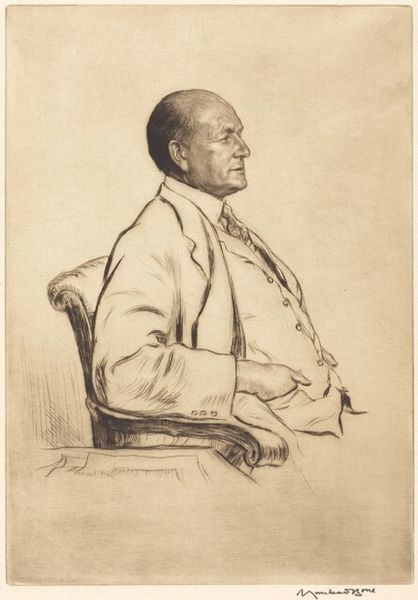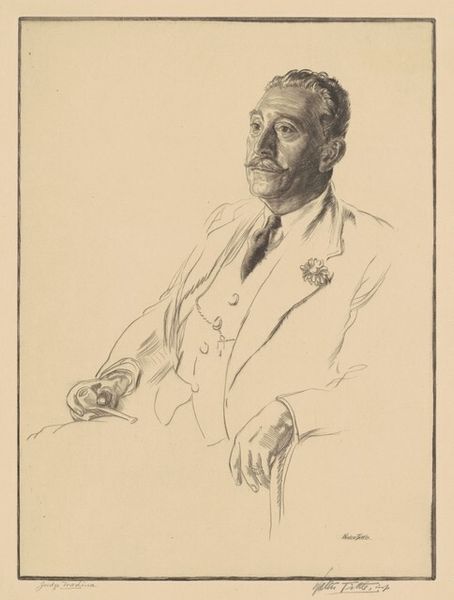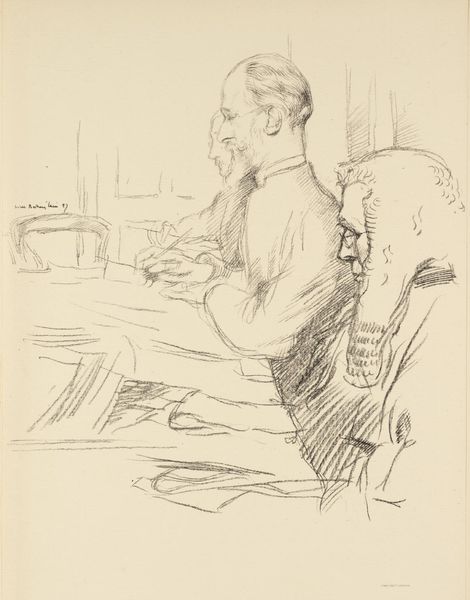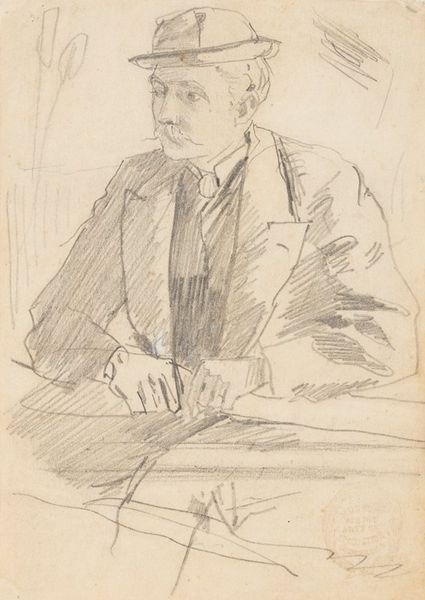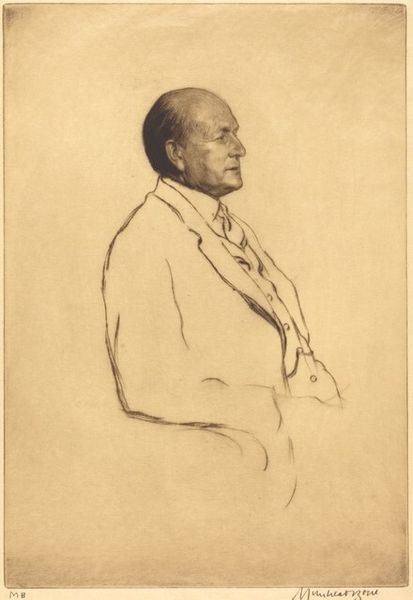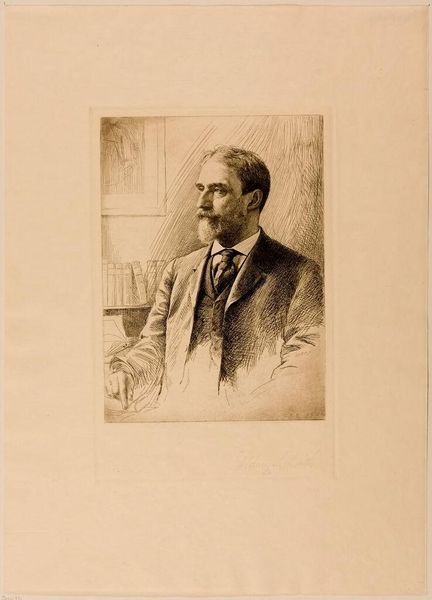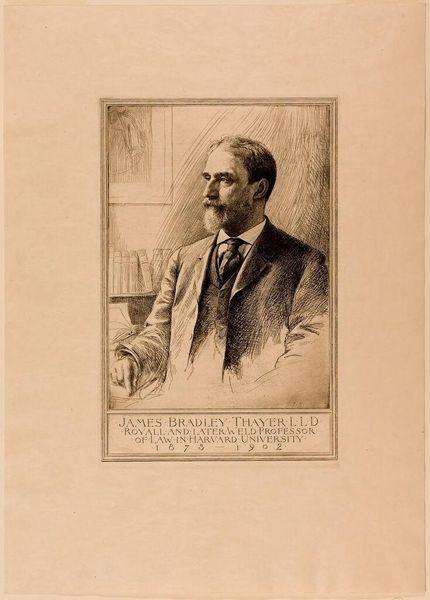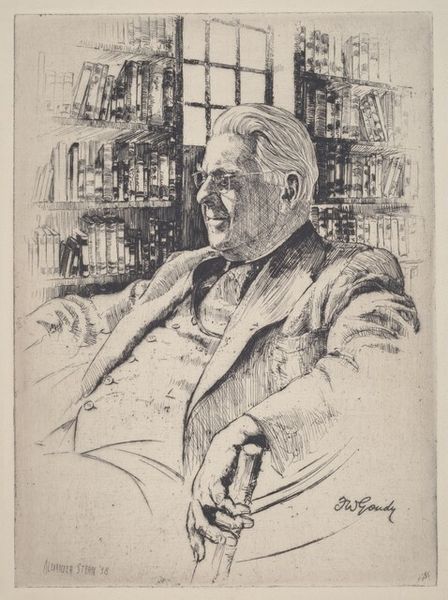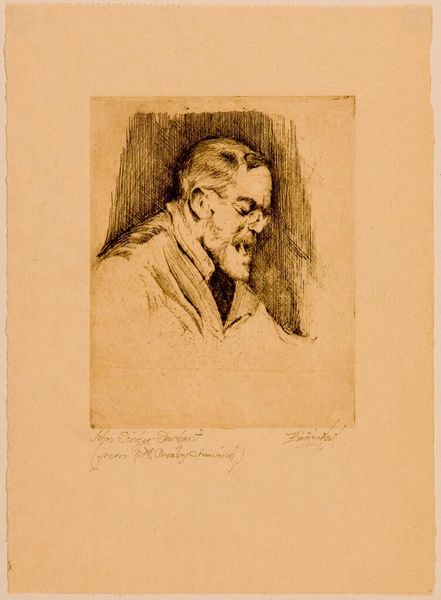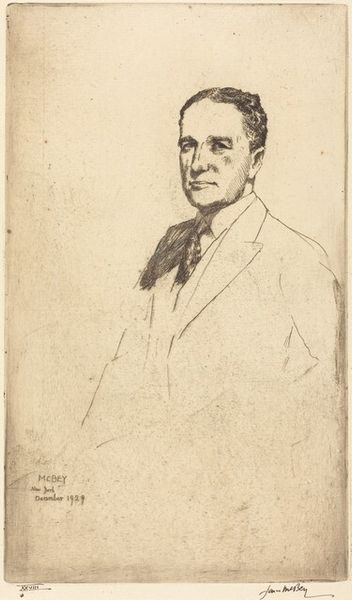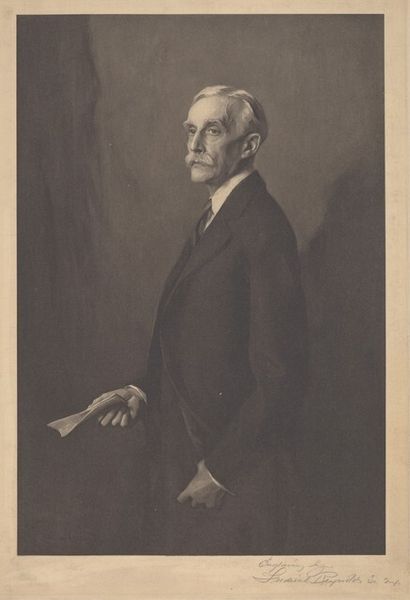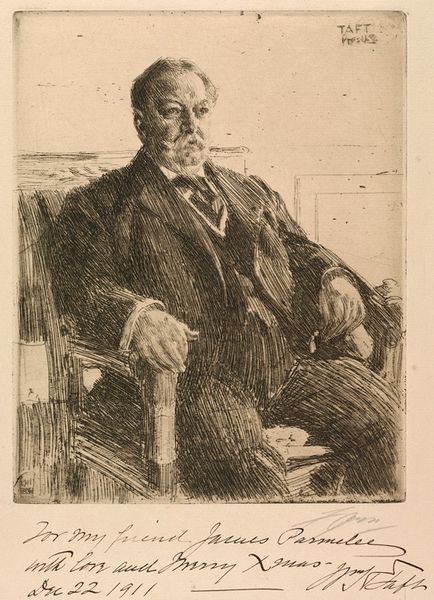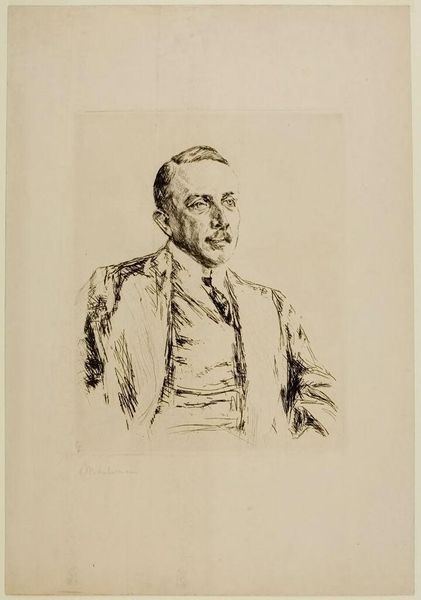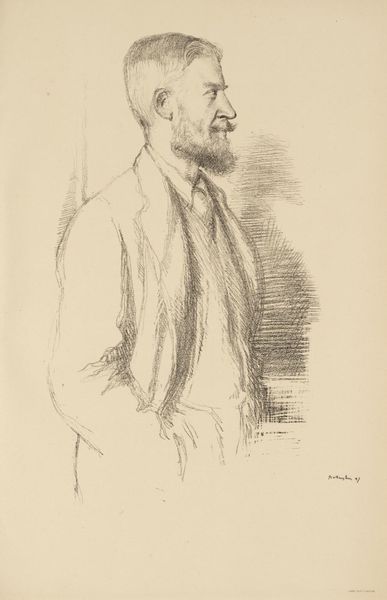
drawing, print, etching, graphite
#
portrait
#
drawing
# print
#
etching
#
pencil drawing
#
graphite
#
sketchbook drawing
#
portrait drawing
Copyright: National Gallery of Art: CC0 1.0
Curator: I find myself drawn into the rather serious countenance of this etching, "George W. Davison - No. 1", completed by Muirhead Bone in 1923. It’s a captivating glimpse into the sitter's world, isn't it? Editor: Captivating, yes, but it’s also, dare I say, a little…clinical? All those sharp lines, like an architectural plan overlaid on a human being. The cross-hatching around his head is like a halo made of anxiety. What do you make of the backdrop? A bookshelf barely suggested and frantic scribble Curator: Precisely. Bone's skill truly shines in his depiction of Davison as the sitter is amidst a backdrop that feels both studious and somewhat haunted. As a print, this etching presents an interesting perspective on the cultural milieu, and one could see him as a symbol of a certain type of individual. The etching technique allowed for wide dissemination, turning Davison's image into a more publicly accessible figure. It prompts us to question the dynamics between personal representation and public image in the early 20th century. Editor: Public image, huh? Or the anxiety of being seen? Look at his hands resting on the desk. They’re tense, almost claw-like. The man looks cornered, caught between the sharp angles of his tailored suit and the claustrophobic books. Perhaps Davison, whoever he was, was an archetype for Bone. You can almost see him there trying to create his own prison of ideas and line work. I wonder if the bookshelf has some keys that Bone hopes someone finds to understanding his characters! Curator: I agree; there's a definite tension palpable in those lines. Davison, chairman of Central Union Bank in New York during a tumultuous financial era, embodies a generation caught in the swell of modernization yet yearning for order. Bone's artistry captures that friction flawlessly, doesn’t it? One could see Bone as capturing a certain level of public apprehension toward the role of bankers at that time in the interwar years Editor: He caught more than friction; he captured the unease of portraiture. The need for presentation. It is so evident in that stark delineation! But let's bring this home: what would you want people to walk away pondering, with this potent image in their mind? Curator: Ultimately, I think Bone presents a multifaceted representation of both the man, Davison, and his age: the struggle to marry the traditional world with an encroaching future. Editor: And me? I will carry away an echoing understanding of portraiture itself—not as mere representation, but the feeling and burden to exist and be judged for history and those future art audiences!
Comments
No comments
Be the first to comment and join the conversation on the ultimate creative platform.
